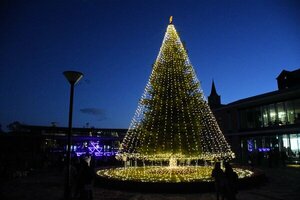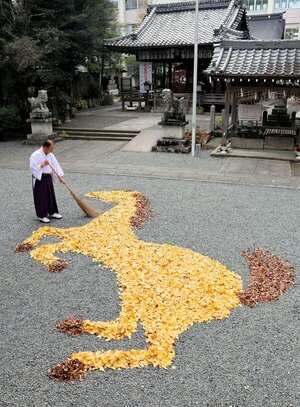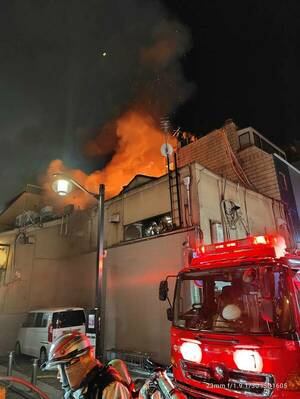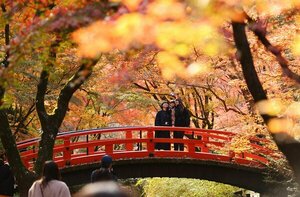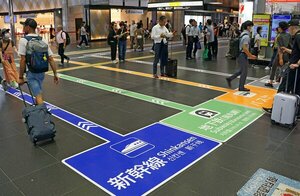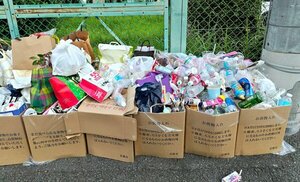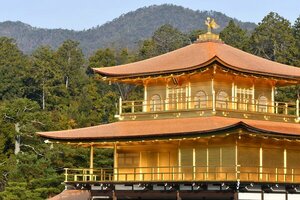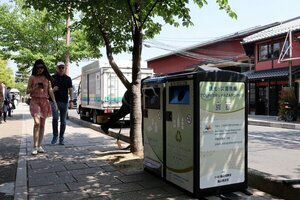The Kyoto Takigi Noh, a seasonal early summer event, will be held at Heian Shrine in Sakyo Ward, Kyoto City on June 1st and 2nd, 2025. This time, the show is titled "Mysterious Journey in and around Kyoto" and features a lineup of performances set in Kyoto and its surrounding areas. The world of the work transcends the Noh stage and is connected to the outside of the venue, creating the feeling of a "pilgrimage to sacred places."
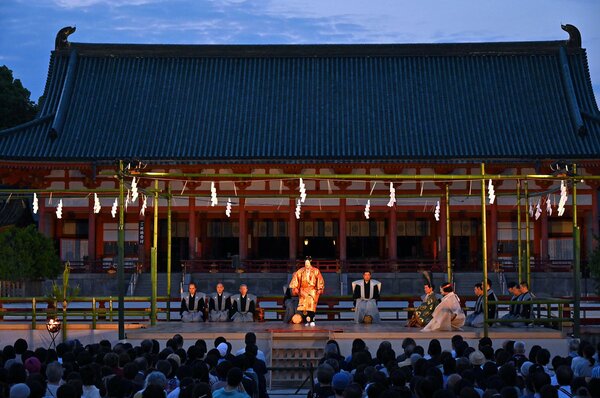
The opening performance on June 1st will be "Hashi Benkei" (Kanze school), which depicts the meeting of master and servant Ushiwakamaru and Benkei on Gojo Bridge. The brave Benkei and the nimble Ushiwaka clash with each other with their swords. The story is also known as a folk tale, but in Noh the setting is reversed, with Benkei appearing to kill Ushiwaka, who is attacking a passerby.
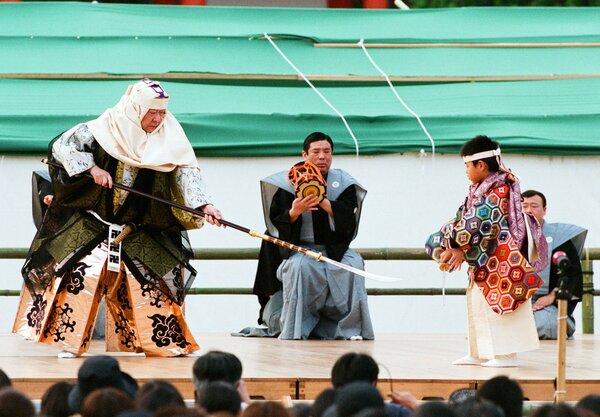
The next performance, "Kocho" (Kongo school), is set in the ancient palace of Ichijo-Omiya. A fleeting butterfly fairy encounters and plays with early spring plum blossoms, which would normally be impossible for her to obtain, thanks to the magical powers of a traveling monk. In keeping with the Maikongo style, she performs a joyful dance, moving in circles around the stage.
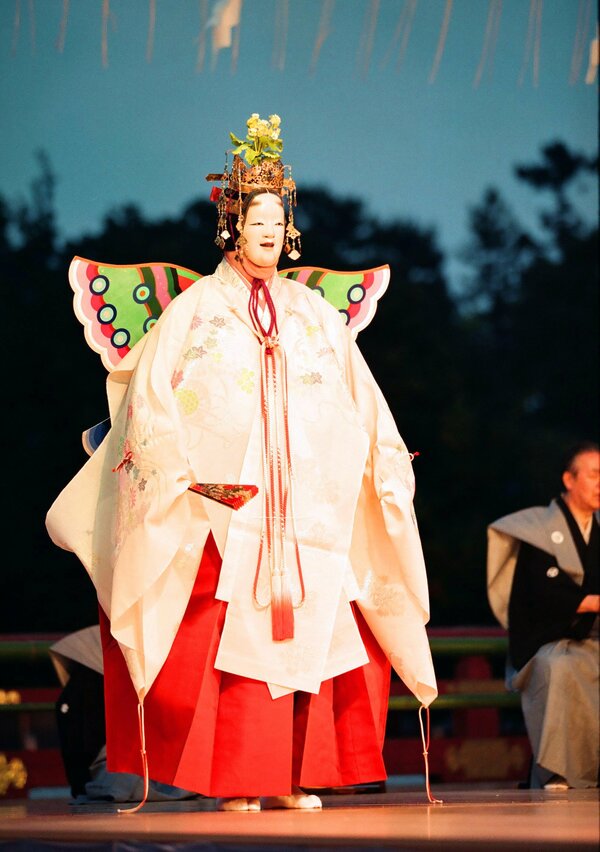
The Kyogen play Hige Yagura depicts a flamboyant marital quarrel between a man with a large beard and his wife. The man is honored at the Imperial Court's Daijoe ceremony thanks to his proud beard, but his wife is angry at his arrogance and brings out a pair of giant tweezers...
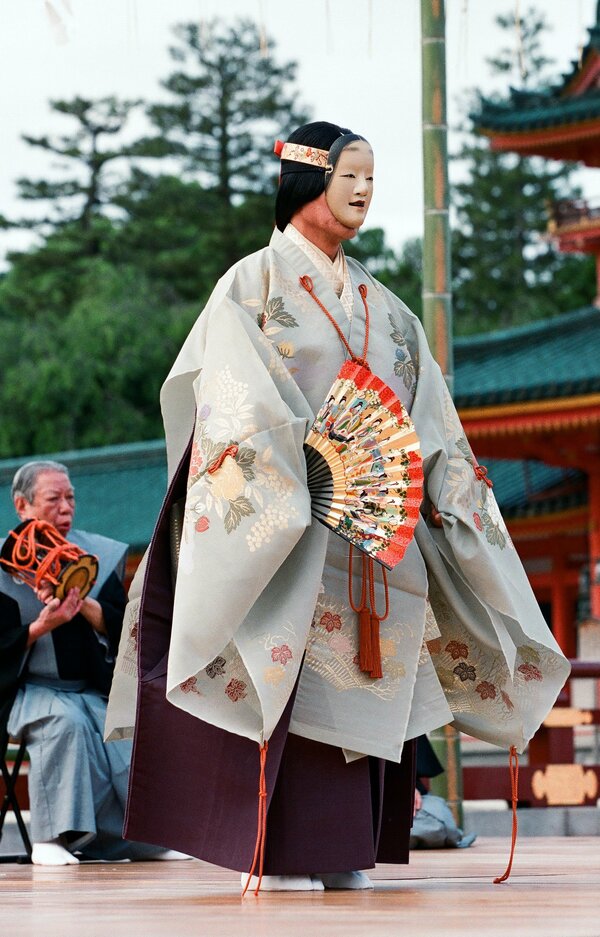
Toru (Kanze school) is set at Rokujo Kawara-in, which was built by Emperor Saga's son Minamoto no Toru. Time passes, and the spirit of Minister Toru appears at the ruins of his dilapidated mansion, and under the full moon, he dances gracefully, reminiscing about his glorious past.
June 2nd begins with Arashiyama (Kongo school). Three gods, including Zao Gongen, appear before an imperial envoy who has come to see the famous cherry blossoms in full bloom, and dance in praise of the flourishing spring. This piece is based on the fact that the cherry blossoms of Arashiyama began when Emperor Gosaga transplanted them from Yoshino during the Kamakura period.
"Yugao" (Kanze school) is a work based on "The Tale of Genji." The spirit of Yugao dances ephemerally as she recounts her memories of Hikaru Genji. The setting is around Gojo. The strong connection between fictional stories and the real world is illustrated by the fact that the place name "Yugao-cho" and even the graves of the deceased remain.
The Kyogen play "Tachiubai" depicts the suffering that comes from a mere whim. In the midst of a crowded crowd of pilgrims to Kitano Tenmangu Shrine, Tarokaja tries to steal someone else's sword, but...
The concluding piece, "Raiden" (Kanze school), is a prequel to the faith in Tenjin. The spirit of Sugawara no Michizane, who seeks to destroy the nobles who framed him, confronts his master, the monk. The stage unfolds from Mount Hiei to the Imperial Palace, thundering as it goes on.
On both days, after the opening performance, there will be a "lighting ceremony" for the torches that will light the stage. Kyoto Noh Association Chairman Inoue Hirohisa said, "We have put together a selection of pieces that will allow you to experience the various charms of the city of Kyoto."
◇
This year, due to renovation work on the main shrine building, the Daigokuden Hall is covered by a temporary fence, so the Noh stage will be reversed from north to south and set up on the Otenmon Gate side for the first time. The sight of the vermilion-painted gate floating in the background will be a unique touch to this year, the 130th anniversary of the founding of Heian Shrine.
The reserved seats introduced last year have been expanded, with approximately 900 seats at the front of the stage out of the approximately 1,700 seats (SS seats 10,000 yen, S seats 8,000 yen, A seats 7,000 yen, B seats 6,000 yen). Unreserved seats (4,000 yen) will be set up in the center front and side front. In case of rain, the venue will be moved to the nearby ROHM Theatre Kyoto.
For beginners, a free public lecture called "Welcome to the World of Noh" will be held at the ROHM Theatre from 2 pm on both days. Included are experiences in Noh chanting and music, as well as a dance and music performance.
During the performance, the traditional "Navi Kyogen" will be performed during intermissions, in which the kyogen actors give a theatrical introduction to the work, and there will also be an earphone guide (1,000 yen) that provides simultaneous commentary as the stage progresses. For inquiries, please call Kyoto Anytime on 075 (661) 3755.


